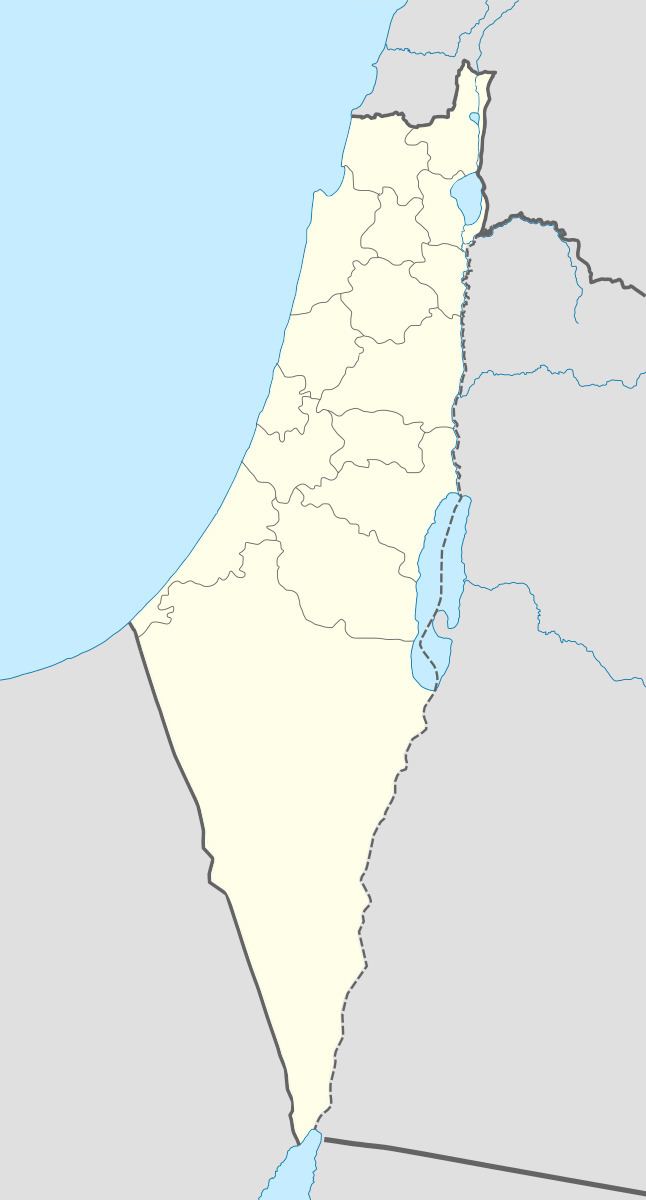Arabic سبلان Palestine grid 182/268 Current localities None | Area 1,798 dunams1.8 km² Date of depopulation 30 October 1948 | |
 | ||
Name meaning Neby Sebelan; the prophet Sebelan | ||
Sabalan (Arabic: سبلان, Sabalân) was a Palestinian Arab village in the Safad Subdistrict, located 15.5 kilometers (9.6 mi) northwest of Safad. It stood at an elevation of 800 meters (2,600 ft) above sea level overlooking the Druze village of Hurfeish. In 1945, Sabalan had a population of 70. It was depopulated during the 1948 Palestine War.
Contents
History
In 1881, the Palestine Exploration Fund's Survey of Western Palestine (SWP) described Neby Sebelan as "a village, built of stone, surrounding the tomb of the Neby Sebalan; containing about 100 Moslems; on top of high hill, with figs, olives, and arable land. There are four good springs to the east, besides cisterns." Some believe Sabalan is supposed to be Zebulun, the son of Jacob, while others claim he was a da'is ("missionary") who joined the Druze religion and helped promote it in the region. Archaeological artifacts, namely rock-cut tombs are located near the tomb.
British Mandate era
In the British Mandate period, it had a circular plan with most of its houses being closely clustered together. Because of the steep slopes that surrounded Sabalan, the village was only able to expand on its northwestern end. Although the tomb of Nabi Sabalan was sacred to the Druze, At the centre of the village stood a mosque.
In the 1922 census of Palestine Sabalan had a population of 68; all Muslim, increasing in the 1931 census, to 94 Muslims, in 18 houses.
By 1945 the population was 70 Muslims, with a total of 1,798 dunams of land, according to an official land and population survey. Of this, a total of 421 dunums were used for cereals; 144 dunums were irrigated or used for plantations, while a 14 dunams were built-up (urban) area.
1948, aftermath
On October 30, 1948, during the Israeli offensive Operation Hiram, Sabalan was captured. Units of Israel's Golani Brigade overran the village with support from the Sheva Brigade as they were advancing along the road leading from Suhmata and Sa'sa'. No Jewish localities were built on village lands, According to Palestinian historian, Walid Khalidi, "Only one village house and a well remain." The remaining house is occupied by the Druze guards and caretakers of the Nabi Sabalan tomb and new buildings were constructed to accommodate pilgrims and visitors. In 1965, Druze youth activists led by Samih al-Qasim protested the confiscation of the lands surrounding the tomb by the Israeli government which declared them "state lands." The Druze religious leadership established Eid al-Nabi Sabalan ("Feast of the Prophet Sabalan") in 1971.
Today, the lands of the village, including the holy shrine, were annexed to the Druze town of Hurfeish. A neighborhood for released soldiers was built there.
